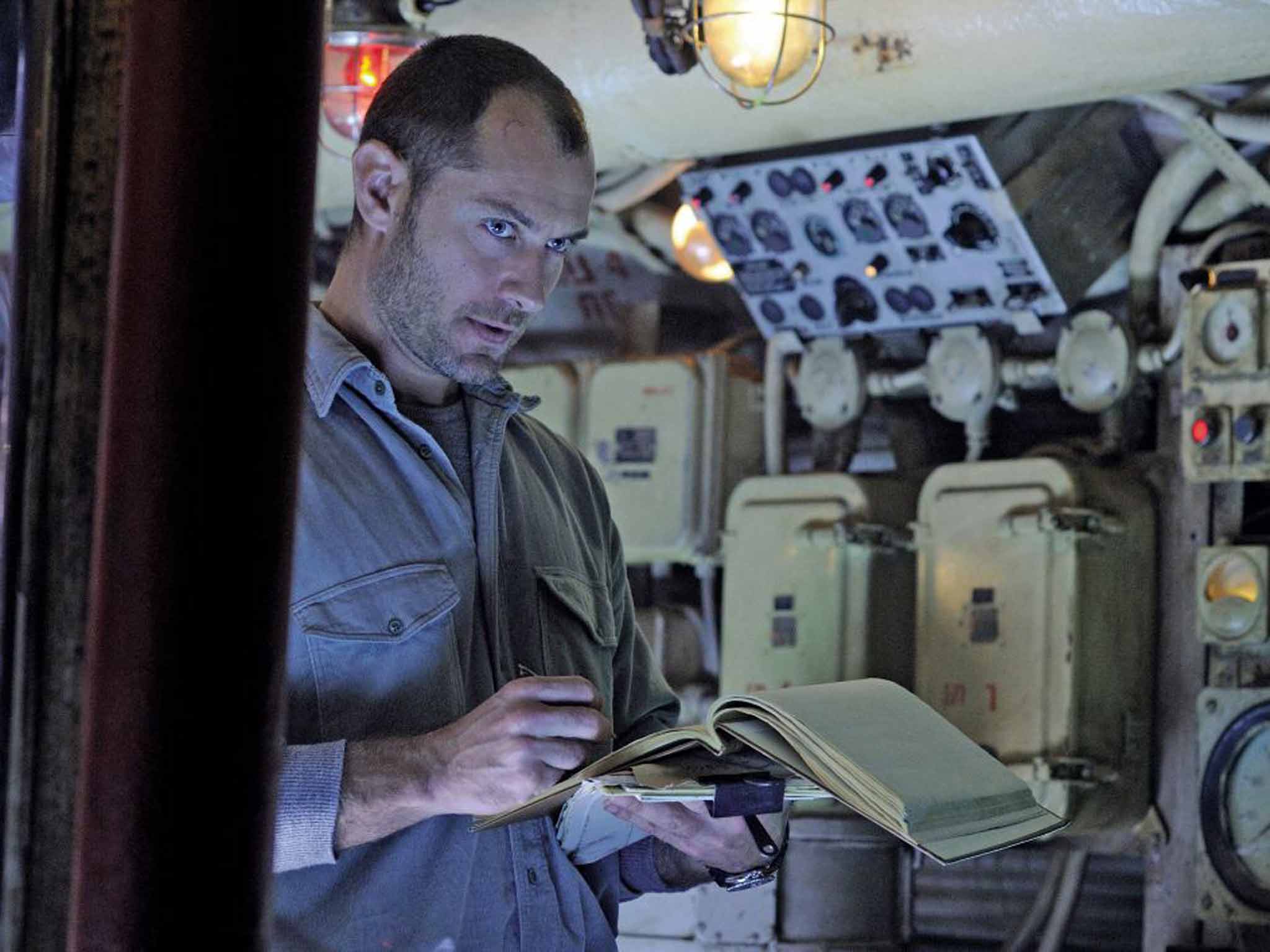Jude Law in Black Sea: The latest 'submarine movie'
Can films really capture the claustrophobia of life underwater?

In preparation for new film Black Sea, in which he plays a rogue submarine captain who goes in search of hidden Nazi treasure, Jude Law spent several days aboard a nuclear submarine.
"Jude did go on a submarine for four days. I turned it down because I was in the middle of prep and I was too busy," the film's director Kevin Macdonald recalls. "He (Jude) went for four days. He got picked up somewhere off Gibraltar and then taken for four days – he didn't know where. He exercised next to the nuclear missiles and slept in a room with 18 men."
Black Sea is the latest addition to the already very long list of "submarine movies". You might think that this is subject matter most film-makers would want to avoid. After all, the interiors of submarines are dark, claustrophobic spaces full of sweaty crew members in which there is hardly room to swing a cat, let alone move a camera. Nonetheless, from the silent era onward, submarine movies have been turned out in huge numbers. Big-name directors from Frank Capra (Submarine) to John Ford (Submarine Patrol), from James Cameron (The Abyss) to Kathryn Bigelow (K-19: The Widowmaker) have made submarine films. There have been comedies set underwater as well as dark, brooding dramas. In the 1990s and early 2000s, we had Crimson Tide and The Hunt for Red October and U-571 – and still we see the periscopes rising regularly on our screens.
Macdonald (whose earlier features One Day in September and The Last King of Scotland won Oscars) has no doubts about the reasons for the continuing attraction of the submarine genre.
"It is similar to why you have so many movies set in spaceships," Macdonald suggests. "It [the submarine movie] is the real version of the spaceship. Most space films, Apollo 13 aside, are not based on real stories. They are fictional."
Very few humans have been to space but (Macdonald points out) there are plenty who've headed beneath the ocean waves. "We are fascinated by and admire people who go on submarines. They seem to be doing something that we shouldn't be doing. It's going against nature."
If something goes wrong on a submarine, the danger is magnified. The threat of death is ever present. Wolfgang Petersen's Das Boot (1981), which many regard as the greatest submarine movie of all, opens with a chilling intertitle telling us that 40,000 German sailors served on U-boats during the Second World War and "30,000 never returned". Memories of recent, real-life submarine disasters – the sinking of Russian submarine The Kursk in 2000, for example – are still fresh in the mind.
Classics of the genre such as Robert Wise's Run Silent, Run Deep (1958) and Dick Powell's The Enemy Below (1957) are both Second World War stories based on novels by ex-navy officers. Edward L .Beach Jr, who wrote Run Silent, Run Deep, fought in the Battle of Midway. Denys Rayner, author of The Enemy Below fought in the Battle of the Atlantic.
More recent submarine movies are always quick to point out the destructive potential of the underwater vessels that they feature. Tony Scott's Crimson Tide (1995) begins by telling us that the three most powerful men in the world are "the President of the United States, the President of the Russian Republic… and the captain of a US nuclear missile submarine".

Watch Apple TV+ free for 7 days
New subscribers only. £8.99/mo. after free trial. Plan auto-renews until cancelled

Watch Apple TV+ free for 7 days
New subscribers only. £8.99/mo. after free trial. Plan auto-renews until cancelled
Black Sea was partly shot on a real submarine, an ex-Soviet "Foxtrot" class vessel that is kept on the river Medway near Rochester. When it was in full service during the Cold War, this submarine had up to 80 people on it, leaving harbour for up to six months at a time. For most of the duration of the voyage, these sailors wouldn't see any daylight at all. The submarine interiors were reconstructed at Pinewood Studios. Macdonald made sure they were true to life. "It was really very hard to shoot," he recalls. "There was no room to move the camera and no room for the actors."
When you are aboard a submarine, you are living in a machine. This is your home but wherever you look, there are gauges, pipes, wires and levers. Macdonald likens the experience to being inside a computer game – either that or being on board a 19th century whaling ship. On the one hand, it is a tough and dehumanising existence, on the other, it fosters camaraderie.
"Submariners are different than most other members of the (armed) services," Macdonald declares. "There is quite an egalitarian feel amongst them. They are not on parade all the time. They are living up close with people."
Black Sea is different from most other submarine movies that have preceded it. This is not about hunting German U-boats or Cold War confrontations. Its characters are down-on-their-luck types with messed-up private lives who see their trip in search of hidden Nazi treasure as a way of redeeming themselves. Nonetheless, as the director acknowledges, his film is addressing the same basic fears as all the submarine pictures that have preceded it.
"The notion of being stuck under the water – that's what is fundamentally terrifying," says Macdonald, succinctly summing up why submarine movies continue to be made.
'Black Sea' is released on 5 December
Subscribe to Independent Premium to bookmark this article
Want to bookmark your favourite articles and stories to read or reference later? Start your Independent Premium subscription today.

Join our commenting forum
Join thought-provoking conversations, follow other Independent readers and see their replies